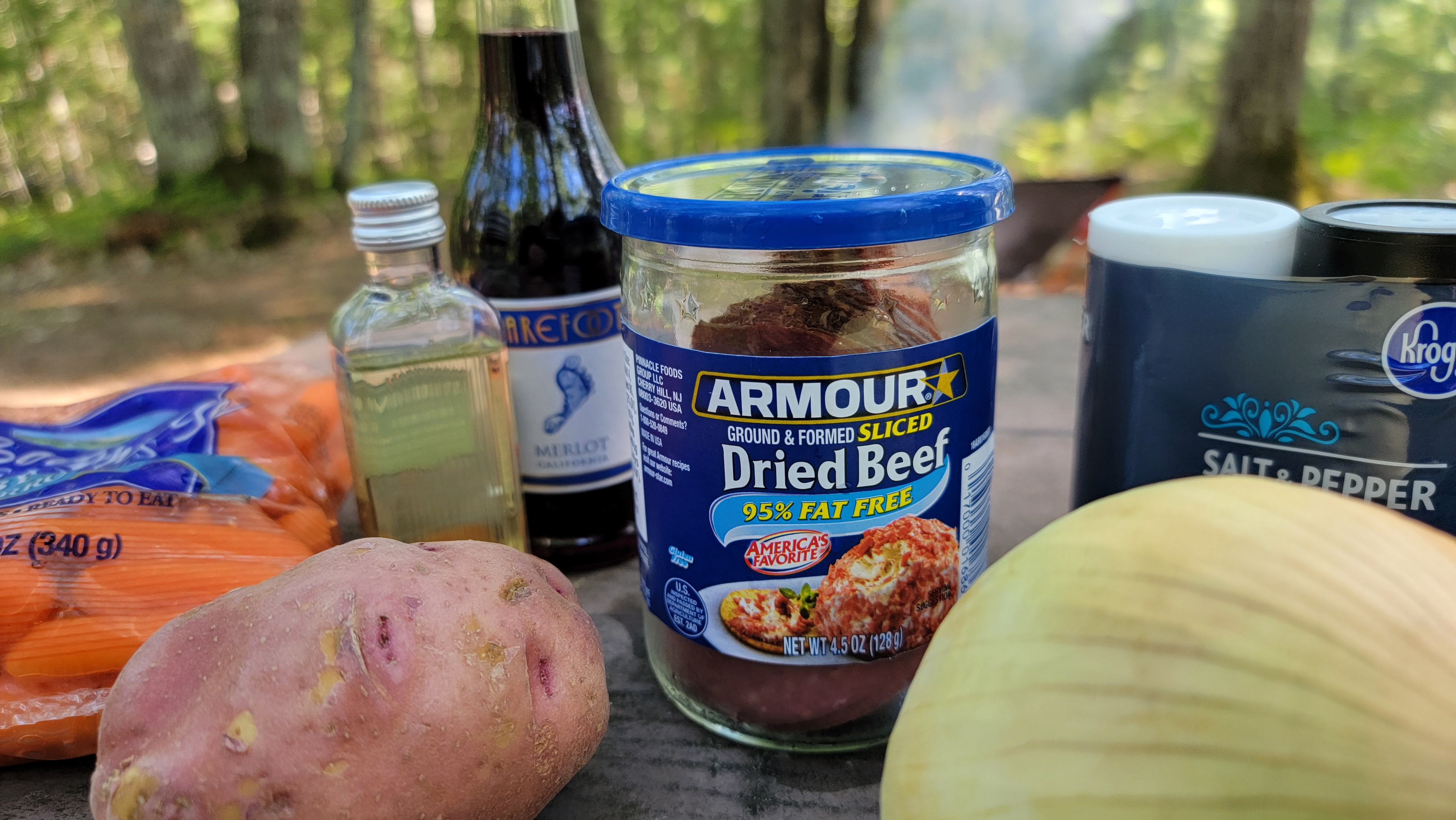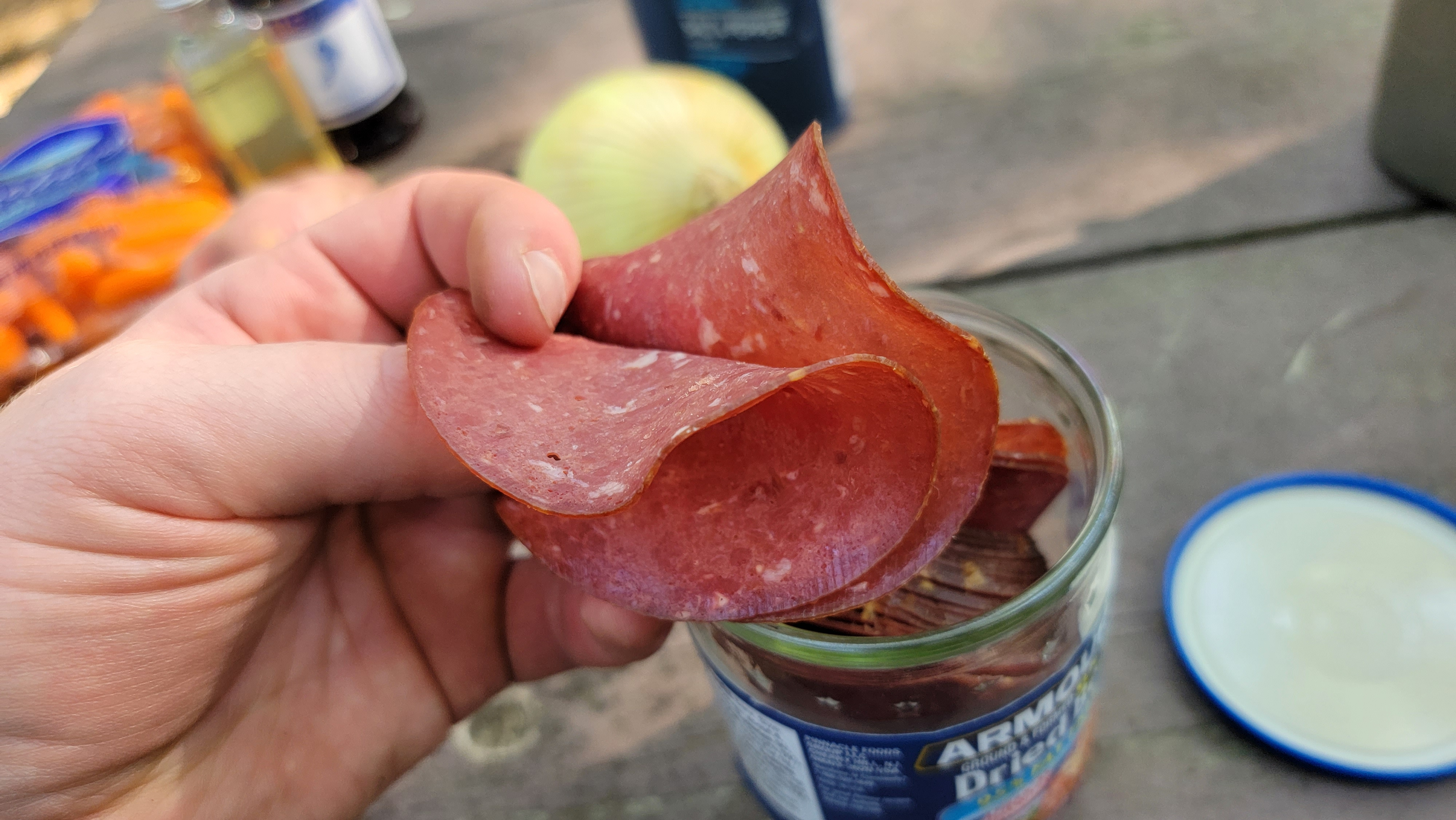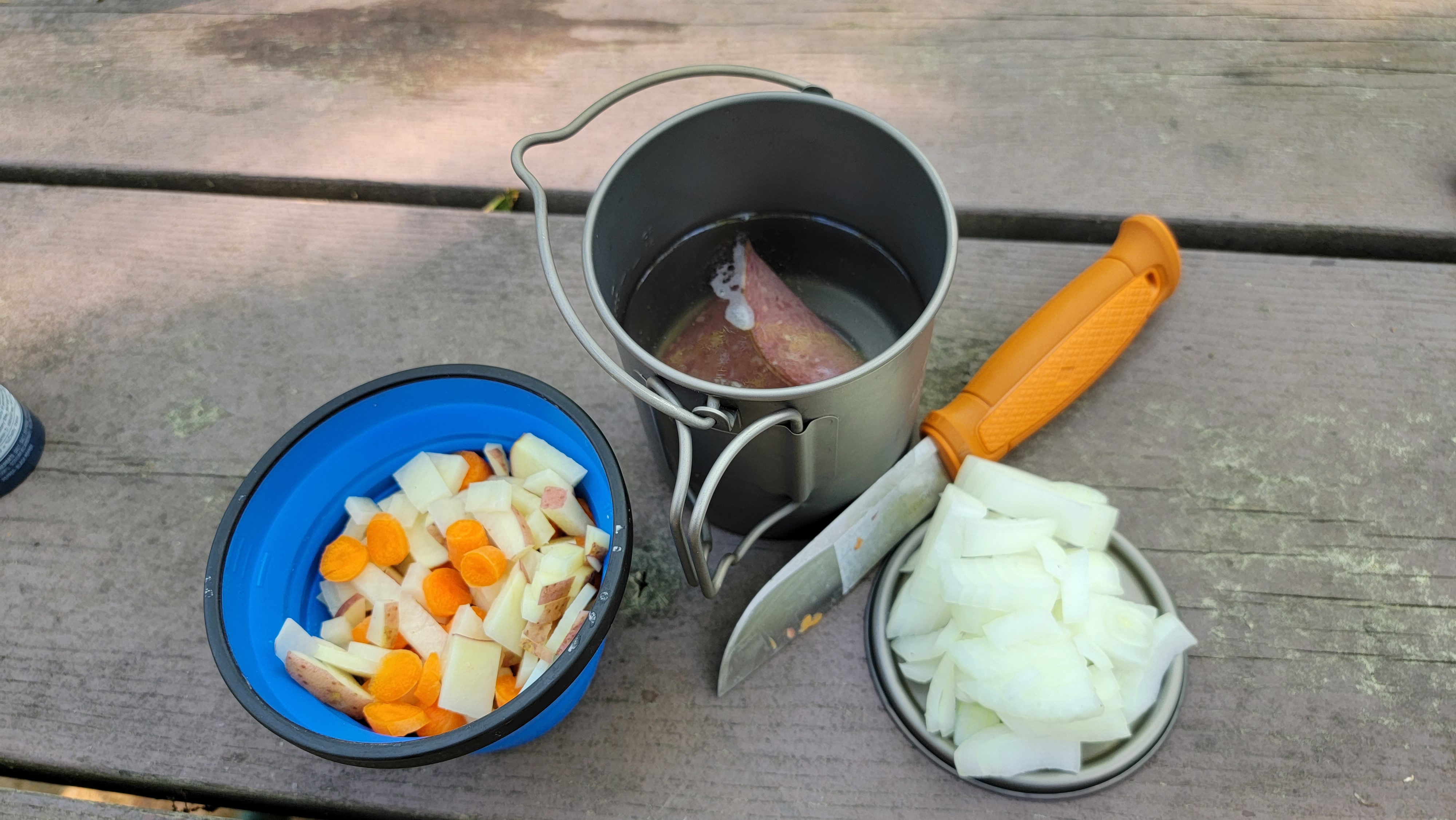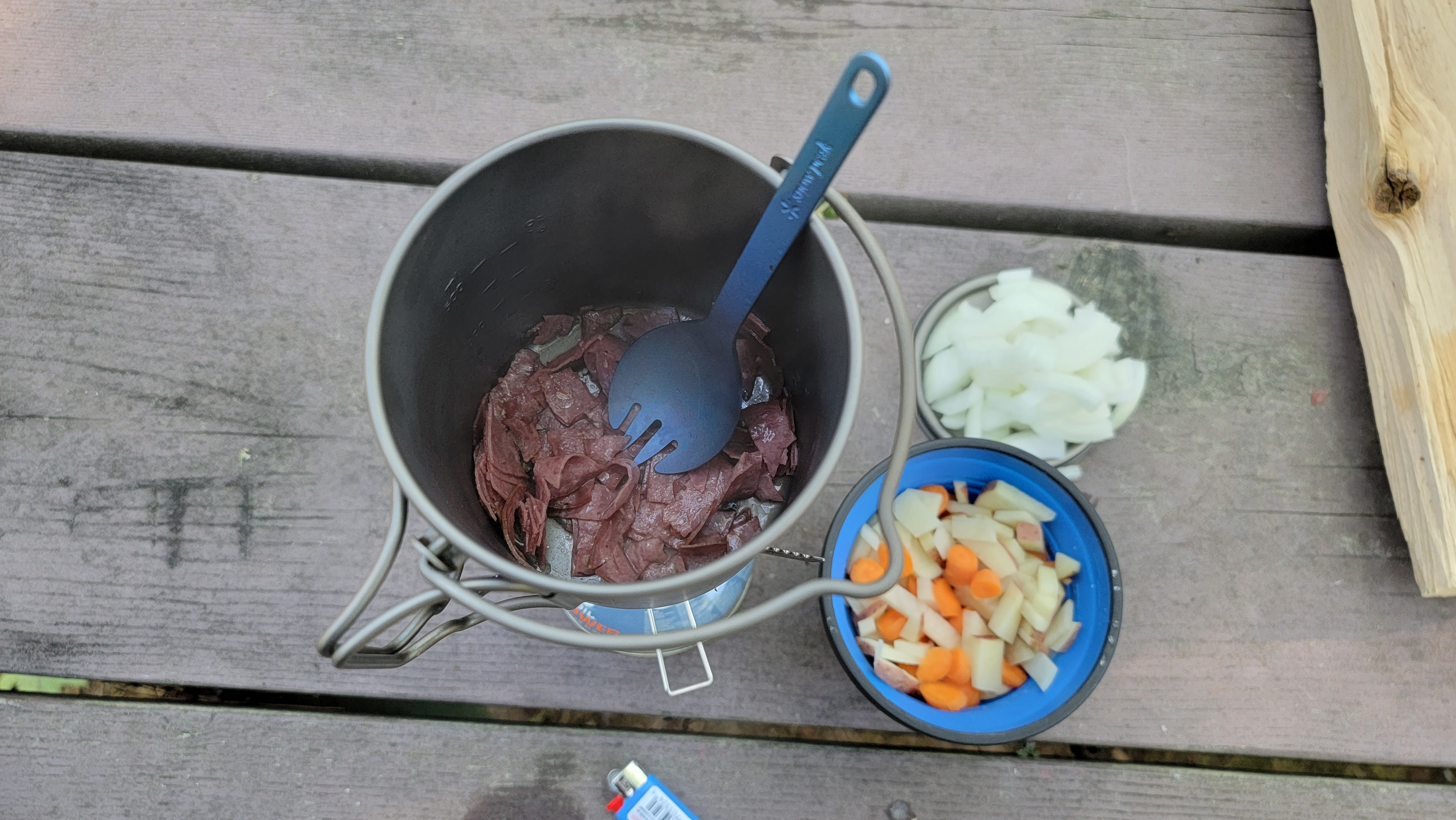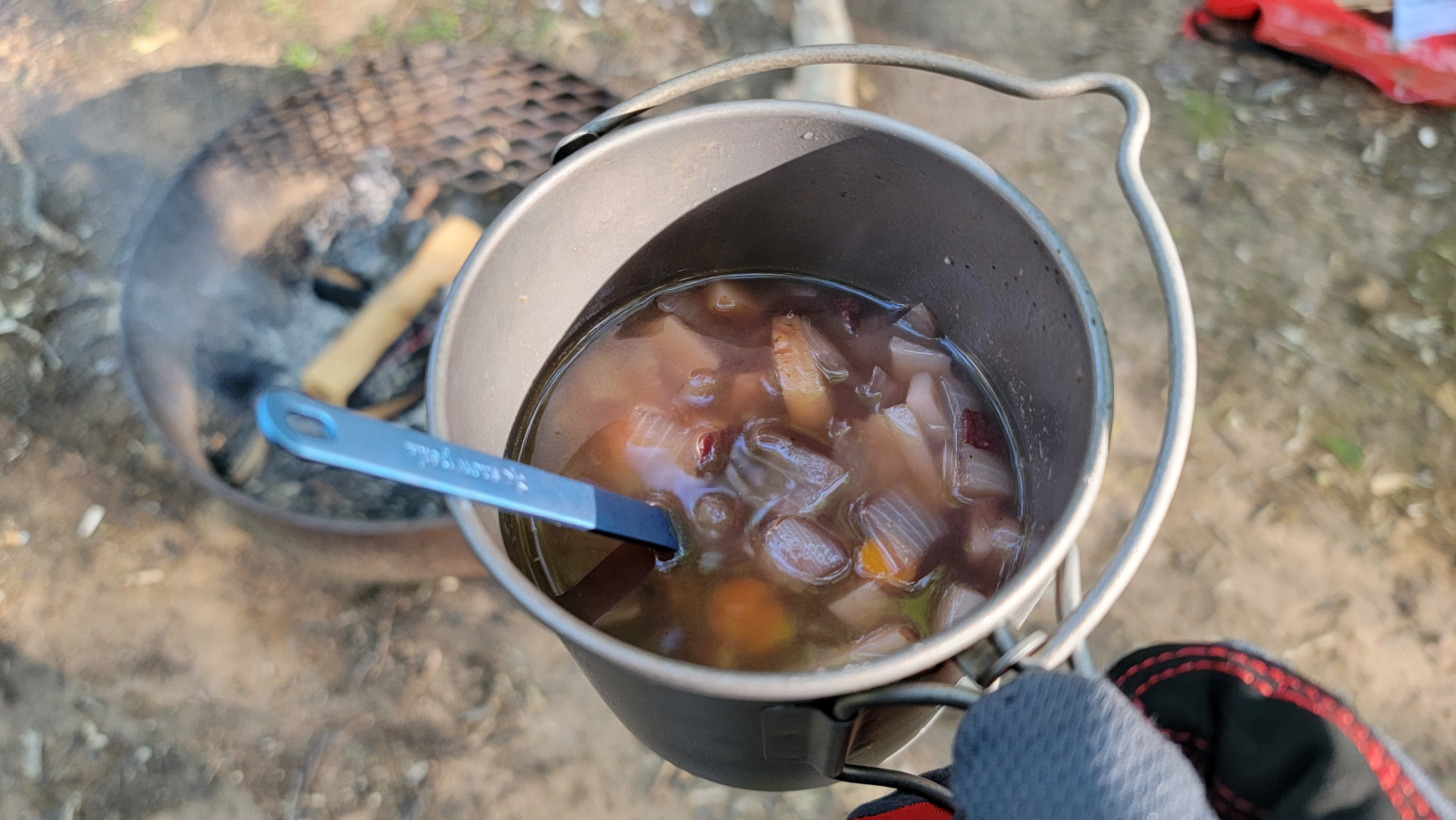What Is Dried Beef, And Can I Make Stew Out Of It?
This venerable foodstuff is loaded with protein, salt, and maybe a pinch of potential.
We may receive a commission on purchases made from links.
Sometimes, cooking is more "Can I do this thing?" than "Should I do this thing?" You get an idea in your head, and the combinations of flavors and methods spiral down into new realms of possibility. This is how we wind up with deep-fried sushi rolls, or peanut butter on cheeseburgers. Or, in my case, stew made from super-processed meat circles.
I've been backpack camping a lot lately, and you eventually get tired of eating tuna packets and ramen. But potatoes, onions, and other popular stew vegetables are okay at outdoor temps, at least for a little while. What was keeping me from throwing them into my pack and enjoying fresh stew in the woods?
Dried beef was the final piece of the puzzle. Little jars of this stuff can be found at most grocers, poised somewhere between the Vienna sausages and canned hash. But what the heck is this circular meat, and what exactly can be done with it? In a moment of inspiration, I decided to find out.

Dried beef is different from jerky
Most people are familiar with the succulent taste of beef jerky. Think of dried beef as its painfully skinny, extra-salty cousin who's maybe a little too into the "military surplus" scene. But it's beef, all right—chopped and pressed, with a long history of feeding the hungry masses.
The Armour version of this staple is, according to its website, "made with fresh beef that is dried until it takes on a robust flavor. Each slice contains 9 calories and is 95% fat free... Great for your favorite recipes, serve it cold in appetizers, sandwiches, or salads... And don't forget the great American favorite every family loves: creamed chipped beef on toast!"
Yeah, well, the older folks I've discussed this with have a different name for that meal: S.O.S., or "Shit On a Shingle." Dehydrated beef in rehydrated milk sauce over stale toast? I can see how this may have been the source of some childhood trauma.
On its own, though, dried beef is pretty inoffensive, like a piece of very thin, very dry slice of summer sausage. Surely a few fresh ingredients could elevate things, right?
Simple flavors for a satisfying meal
In the backpacking spirit, I tried to keep things light and at least marginally resistant to ambient temps. Along with the jar of beef, I packed out a potato, an onion, shakers of salt and pepper, some canola oil poured into a repurposed bottle, and a single serving of cheap (but drinkable) merlot. I meant to take a carrot, but misplaced it somewhere in the process. I settled for a packet of baby carrots from a rural grocery store.
And that wasn't the only thing I left behind. Upon reflection, I could have included some flour to thicken things up, and a clove of garlic for flavor. But as delicious that might be, I didn't want a head of garlic getting smashed and stinking up the inside of my food bag.
Making the camp stew
My tools were pretty basic: a small titanium pot, an ultralight camping stove, and a knife and spork to work the magic. A flat piece of firewood served as my cutting board, and some filtered water made up the final ingredient.
I soaked the beef in this water while prepping the rest of the ingredients. Several folks mentioned this as a means of de-salting the protein, and the jar itself recommended the step. After the everything was cut, into the pot went the meat (which I'd roughly chopped), along with some oil.
Almost immediately, I learned that these backpacking stoves aren't built for this type of cooking. Pocket Rockets are really meant to do one thing – Boil water, and fast. So, in order to avoid scorching the bottom of my pot, I tamped the flame as low as it would go. Once the meat released some juices (and a rather unpleasant smell), I added the onions and waited for some color to develop.
It was pretty much standard stew procedure from there. Add the rest of the vegetables, sweat, and deglaze with the wine once everything starts to stick. Then more water went in, along with a judicious amount of pepper and salt.

Again, the Pocket Rocket is great at bringing things to a boil. Simmering, though? That took some careful attention. Between skimming the fat with the spork and testing the taters for doneness, the cooking time amounted to something like 20 minutes.
What I tasted, learned, and didn’t
The resulting meal was less of a stew and more of a thin, vegetal soup. But I'd hiked most of the day, and was ready to eat just about anything. The potatoes were delicious, and the broth carried the warm flavors of wine and black pepper. But the beef itself? Until you got down to the greasy dregs, you could barely tell it was there.
Perhaps the meatiness would have been more pronounced if I'd skipped the soak. This also might have saved me the effort of adding salt back in to season the potatoes. These are fine-tuning steps that could, given another shot, make an interesting fireside meal.
Would I do this again? Almost certainly not. If anything, I'd leave out the beef altogether and stick with the vegetables and wine, maybe adding a bit of tomato paste to make the whole thing pop. But this was a lot of effort for a single serving meal. And if you don't take the time to boil and scrub out your pot, your morning coffee is going to taste like stew. Ask me how I know.

Still, there's something to be said for the nutrition in the fresh veggies. Maybe with some rice and a bouillon cube, and if I simmered it directly over the campfire... Oh, no, someone help. I'm talking myself into doing this again.
At best, dried beef is salty and inoffensive. Try it on a sandwich, or keep it in your fridge until the collapse of civilization drives us all back into the woods.
